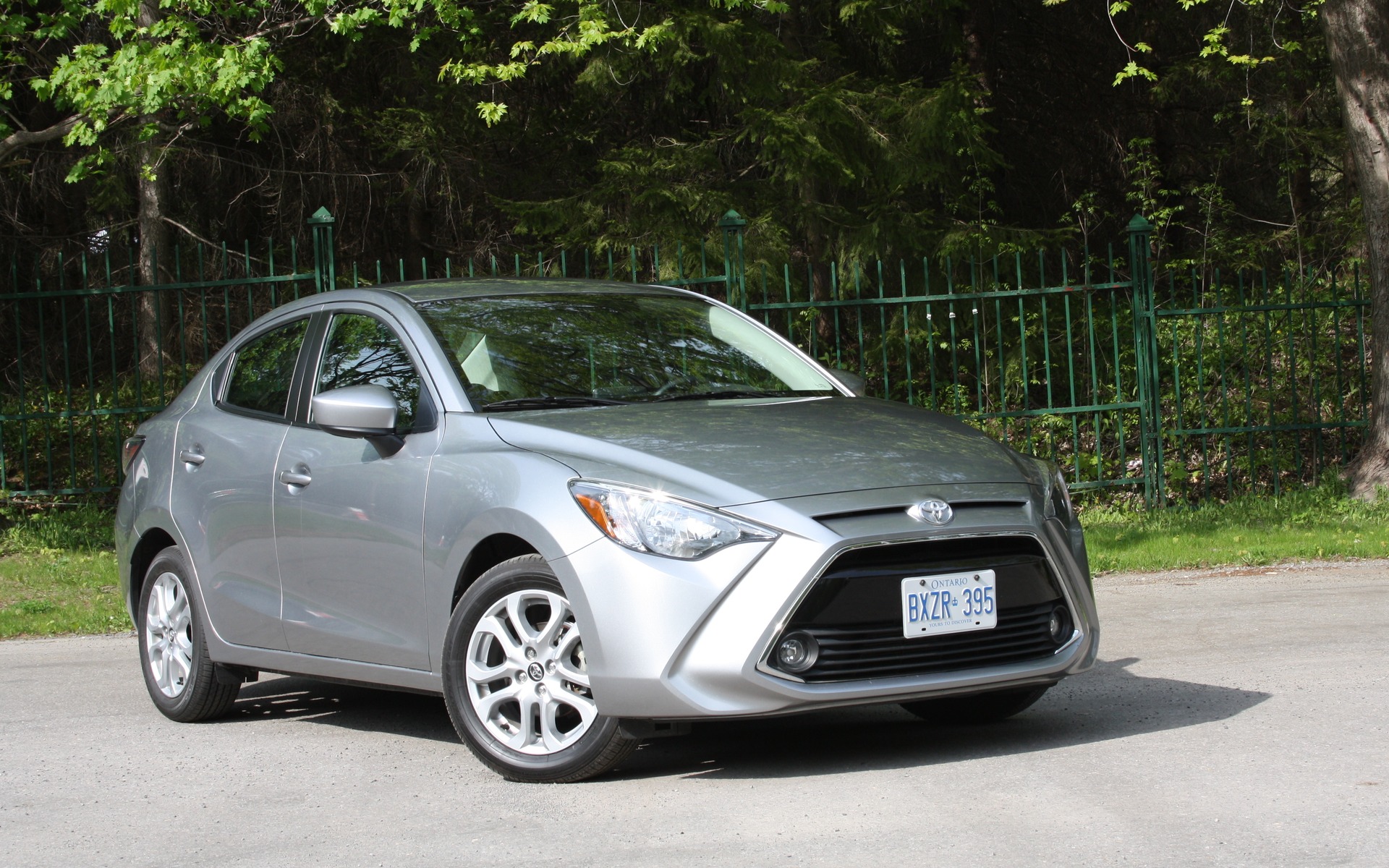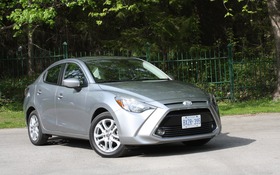2016 Toyota Yaris Sedan: The Adopted Child has Talent

| Strong points |
|
|---|---|
| Weak points |
|
The Yaris and its predecessor, the Echo, have always been regarded as basic, reliable transportation. On the other hand, they’ve never been particularly exciting to drive, but that’s not the main criterion of subcompact-car buyers, either.
Toyota resuscitated the Yaris Sedan for the 2016 model year, and off the bat, it’s important to know that it has nothing to do with the Yaris Hatchback. The latter is a true blue Toyota product, while the sedan version is essentially a rebadged Mazda2, set to compete with the Ford Fiesta, the Chevrolet Sonic, the Hyundai Accent and the Kia Rio.
- Also: 2015 Toyota Yaris: It Ain’t Easy Being a Sub-Compact
- Also: 2017 Toyota C-HR: a Glimpse of the Cockpit
What? Why would a huge company such as Toyota outsource the development of one of their models? Well, subcompacts aren’t all that popular in the United States, and sales have been in a downward spiral in Canada for a while now, so the numbers can’t justify spending hundreds of millions of dollars of R&D on a new model. In addition, Toyota’s European and Japanese product lineups have small hatchbacks, but not sedans which U.S. consumer are more inclined to buy, for some strange reason.
The most cost-effective solution is to swing a deal with another automaker and outsource production. It’s win-win for both Toyota and for Mazda, who pulled the plug on the Mazda2 in North America, but is still building cars for our market.
Long story short, the transformation from Mazda2 to Yaris Sedan was a matter of reshaping the headlight clusters and the grille, slapping on a Toyota logo on the trunklid and the steering wheel, and calling it a day. Still, if automotive journalists wouldn’t be saying all the time that the Yaris Sedan is actually a Mazda, the general consumer might not even notice or care.
Dynamic drive
As far as subcompacts go, the 2016 Toyota Yaris Sedan is one of the most engaging to drive, right up there with the Fiesta. This is probably the biggest difference with the Yaris Hatchback. The sedan’s suspension is finely tuned to provide a decent ride on the highway, but can also keep the car’s shiny side up in the twisties. Mazda’s DNA is still present here. In addition, the turning circle is narrow, making the car pretty nimble in crowded parking lots.

Under the hood, the Yaris Sedan boasts a 1.5-litre, direct-injected four-cylinder engine that develops 106 horsepower and 103 lb.-ft. of torque. These numbers are the same as those of the Hatchback’s Toyota-designed 1.5-litre engine. However, the Yaris Sedan offers a choice between a six-speed manual transmission and a six-speed automatic. The hatchback gets either a five-speed manual or a four-speed auto.
Straight-line performance is adequate in both cases, but the Sedan’s more modern powertrain nets better fuel economy. Aside from its city/highway figures of 7.2/5.6 L/100 km with the automatic transmission, we ended up our test week with an excellent average of 5.8 L/100 km. The Hatchback needs at least one more litre of fuel every 100 km, as does all its rivals.
High-quality interior
Anyone who has sat in a Mazda CX-3 will recognise Mazda’s styling touch in the 2016 Toyota Yaris Sedan. The layout is identical, save for the Toyota badge on the steering wheel and the switch from red to blue for the seat upholstery pattern, the contrast stitching and the infotainment system on-screen interface. The dashboard layout is clean and elegant, while the faux-leather trim adds an upscale touch in what is supposed to be a no-frills, budget-minded subcompact.
The Premium trim level, only available with the automatic transmission, adds a more comprehensive infotainment system with a seven-inch touchscreen and a console mounted multifunction knob, heated front seats, a rearview camera, fog lamps and 16-inch alloy wheels. By the way, there is no CD player in Yaris Sedan; who still buys them, anyway?
Passenger space is similar to what’s found in rival subcompact sedans, aside from the Accent and Rio being slightly more accommodating up front, and the Fiesta being tighter in the rear-seat area. Trunk space is comparable, too, although the Sonic has the biggest boot of the bunch.

Not a stripper
The 2016 Toyota Yaris Sedan is offered at a base price of $16,995 before freight and delivery charges, while the Premium trim is listed at $20,200. While that seems high compared the $14K entry price of the Accent, the Rio and the Sonic, the Yaris does include standard features such as air conditioning, Bluetooth connectivity, cruise control and keyless entry. Still, it’s not the best deal among subcompact sedans.
On the other hand, you get a well-equipped small car that’s fun to drive and is very fuel efficient. The Yaris Sedan’s front-end styling may not be to everyone’s liking, and the car may not be as rock-solid as Toyota’s home-grown products, including the Yaris hatchback. However, here’s an enjoyable sedan that both Toyota and Mazda shoppers can appreciate.











